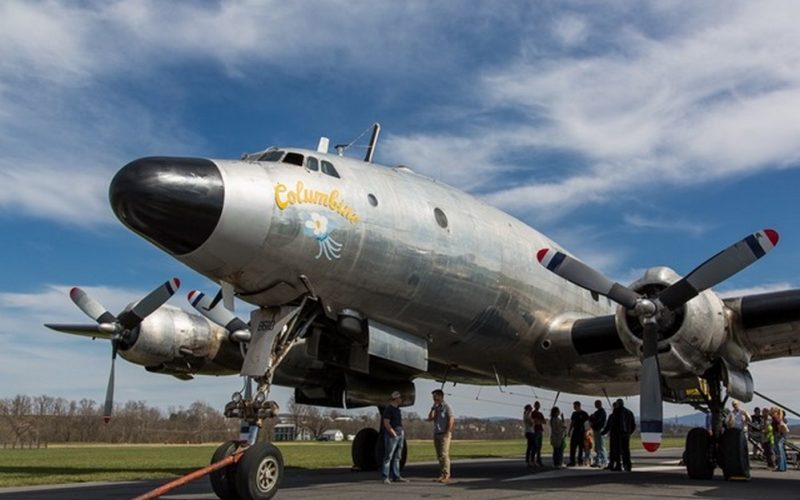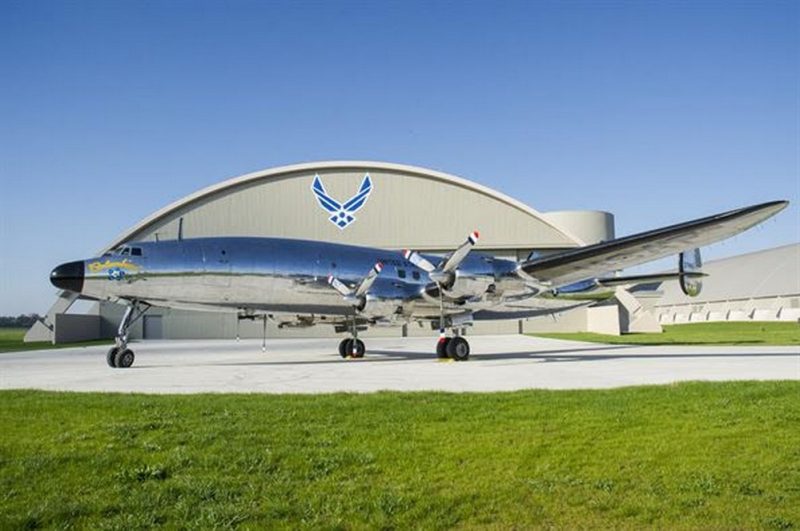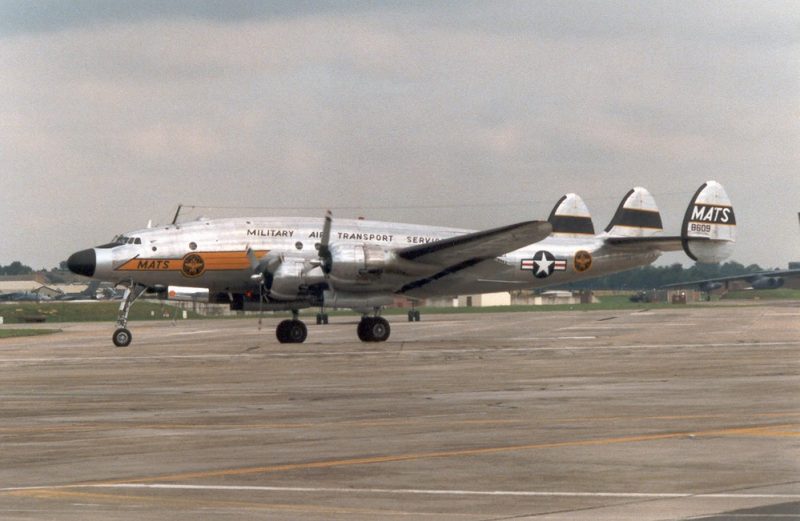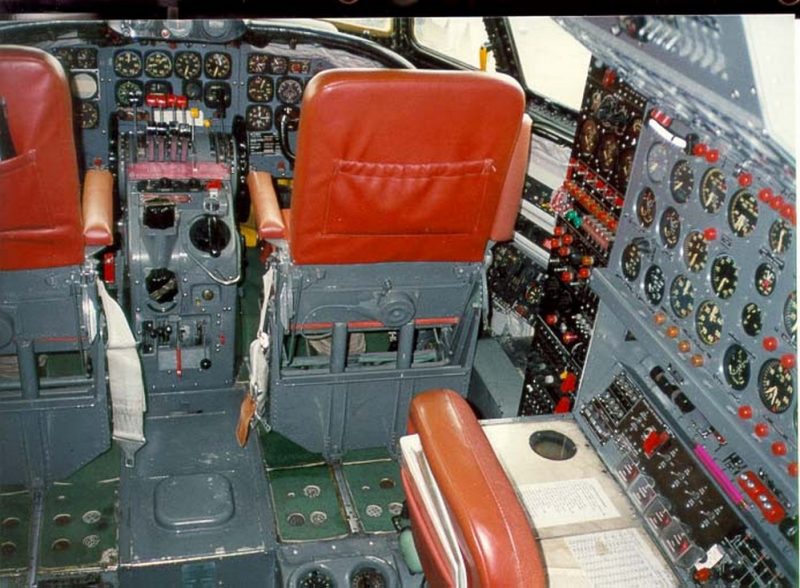The following information comes from local Sulphur Springs resident Tony Hughes. Mr Hughes worked on, performed engine run up, pre-flight/post flight and flew as an aircraft mechanic observer on FCF’s (functional check flight) at the Greenville, Tx. plant, formerly known as TEMCO. The Greenville plant started as Temco (Texas Engineering & Manufacturing Co.) then changed to Ling-Temco Electronics, Inc. in 1960, then Ling-Temco-Vought, Inc. in 1961. The company then changed it’s name to LTV Electrosystems, Inc. in 1965, then E-Systems, Inc. in 1972. A merger changed the name to Raytheon E-Systems in 1995, and now the company has been managed by L-3 Communications since 2002.
The C-121A was the military variation of Lockheed commercial Model 749 Constellation. Howard Hughes was one of the driving forces behind the design of the Lockheed Constellation commercial transport. Between 1948 and 1955 the USAF ordered 150 C-121As for use as cargo/passenger carriers, executive transports, and airborne early warning aircraft.
Fifty-five percent of the Super Constellations built by Lockheed were delivered to the U.S. Navy and Air Force. A majority of the aircraft were used for electronic reconnaissance and airborne early warning. In the mid-1960s, the Air Force sent the first EC-121 “Warning Star” to Southeast Asia to maintain radar surveillance over North Vietnam and then later to warn of MiG attacks and alert American pilots who were straying over Chinese territory.
The Lockheed EC-121 Warning Star was a United States Navy and United States Air Force Airborne early warning and control radar surveillance aircraft. It was designed to serve as an airborne early warning system to supplement the Distant Early Warning Line, using two large radomes, a vertical dome above and a horizontal one below the fuselage. EC-121s were also used for intelligence gathering (SIGINT). It was introduced in 1954 and retired from service in 1978, although a single specially modified EW aircraft remained in service with the U.S. Navy until 1982. Warning Stars of the U.S. Air Force served during the Vietnam War as both electronic sensor monitors and as a forerunner to the Boeing E-3 Sentry AWACS. U.S. Air Force aircrews adopted the civil nickname, “Connie”
Columbine II is a Lockheed VC-121A Constellation (Air Force Serial Number 48-0610) used by President-elect Dwight D. Eisenhower until replaced by VC-121E Columbine III (AF Ser. No. 53-7885). This aircraft was the first plane to use the Air Force One call sign. Over Richmond, Virginia in 1954, Eastern Airlines Flight 8610, a commercial flight, shared the same air space withAir Force Flight 8610, which was carrying President Dwight D. Eisenhower at the time, prompting the adoption of the unique call sign Air Force One whenever the President was on board any aircraft.
After being replaced, Columbine II continued in service with the United States Air Force until retired to Davis–Monthan Air Force Base for storage during the late 1960s. The aircraft was sold as part of a package lot to Mel Christler, a Wyoming businessman who owned a crop-dusting service, and was made airworthy in 1989 and flown to Abilene, Kansas for Eisenhower’s 100th birthday celebration and to an air show at Andrews Air Force Base, Maryland. In 2003, it was then flown to Marana Airport, Arizona for storage.
The aircraft owner was considering cutting the aircraft up as scrap when the Smithsonian Institution, during a research project, contacted the owner and informed him that 48-610 was, in fact, a former presidential aircraft. Columbine II was purchased and moved from Arizona to Bridgewater, Virginia in March 2016 for restoration by Dynamic Aviation. The purchase price has not been disclosed but the purchaser, Karl D. Stoltzfus Sr., founder of Dynamic Aviation, has said it was less than $1.5 million. Dynamic Aviation mechanics did significant work on the plane in Arizona in preparation for its flight to Virginia where it is to be completely restored.
The Lockheed VC-121E “Columbine III” is at the National Museum of the United States Air Force DAYTON, Ohio.
Temco/Ling-Temco Electronics/Ling-Temco-Vought Greenville, TX performed maintenance and modification on the C-121A, C-121G, EC-121D and EC-121K aircraft beginning in 1958 thru 1969.










